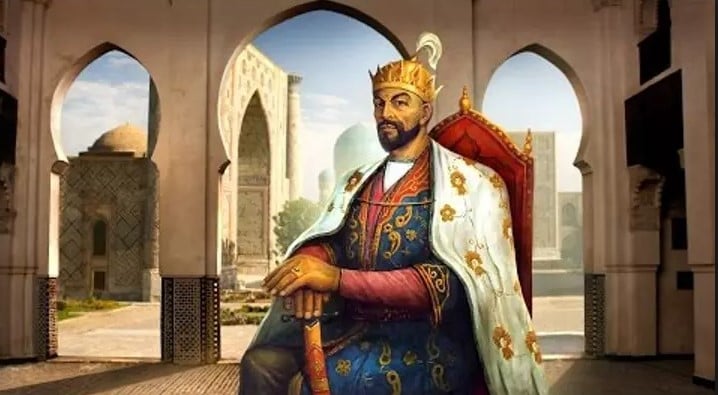Timur, also known as Amir Timur or Tamerlane and later as Timur Gurkin, was a Turko-Mongol conqueror and the founder of the Timurid Empire in Persia and Central Asia. He was also the Timurid dynasty’s first ruler. But did you know why Timur ordered the massacre of over 100,000 citizens of Isfahan?
Isfahan immediately surrendered to Timur, the Turko-Mongol conqueror, and was treated with mercy. The city then assassinated Timur’s tax collector and his soldiers. In retaliation, Timur ordered the massacre of over 100,000 city residents and erected dozens of piles of their heads.
Timur, The Conqueror Timur
Amir Timur was born on April 9, 1336, in Kesh, a city about 50 miles south of Samarkand. Timur claimed to be a descendant of Tumbinai Setsen, a male-line ancestor he shared with Genghis Khan through his father, a lesser chief of the Barlas tribe.
Timur is described as tall and powerful, with a large head and a broad forehead. His skin was ruddy and pale, and he sported a full beard.
Timur was injured by arrows while stealing sheep in his twenties, leaving him lame in the right leg and stiff in the right arm for the rest of his life, according to the biographer Sharaf ad-Din. As a result, his Persian name is Timur-i lang or Temur the Lame.
His lameness didn’t seem to slow him down, and by age 35, he was in control of all the lands that comprised Chagatai’s heritage. He made Samarkand his capital after being proclaimed sovereign at Balkh.
Timur never learned to read or write, but he spoke two or three languages, including Turkic and Persian, and had history books read to him while he ate dinner.
He is described as an intelligent man who enjoys art, particularly architecture and gardening. He enjoyed playing chess and invented a more complex game that uses twice the standard number of pieces on a 110-square board. This game is now known as Tamerlane Chess. (Source: The Silk Road)
Timur’s Empire
Timur inherited a rule system that he applied to nomadic and settled populations. Timur valued the control and use of settled populations far more than Genghis Khan.
Timur began using the epithet Sahib Qiran early in his career, symbolizing it with three circles forming a triangle. The term, derived from astrology, translates as Lord of the Fortunate Conjunction. This reflected Timur’s desire to not only balance chiefs, nomads, and settled populations but also to integrate them into a dynamic institutional system. (Source: The Silk Road)
Timur’s Military Prowess
Timur’s army won the great Battle of Kanduzcha on June 18, 1391, and on July 28, 1402, Timur led his men to victory against the Ottoman army in Ankara. Timur’s army was divided into tumen, which were military units of 10,000 men each.
The army was known not only for its ferocity and violence but also for its diversity. It included soldiers from Timur’s heartland as well as newly conquered lands and was described by contemporary sources as a massive conglomeration of different people; nomadic groups and settled populations; Muslims and Christians, Moghuls and Anatolians, and various ethnicities such as Turks, Arabs, Tajiks, Georgians, Persians, and Indians. The Barlas and Jalayir were two of Timur’s most loyal tribes. (Source: The Silk Road)
Image from Uzbekiztan
